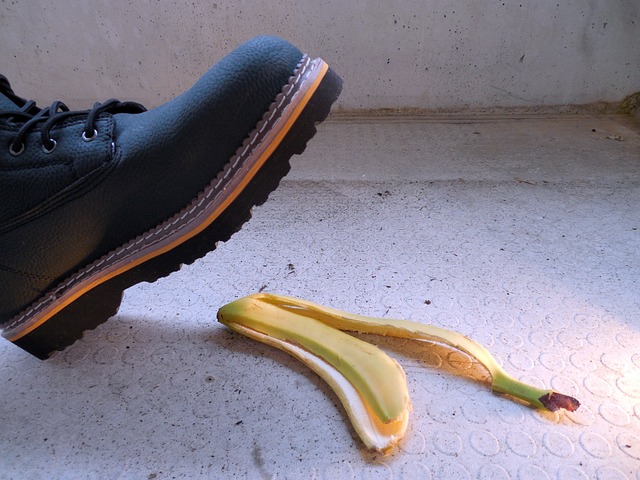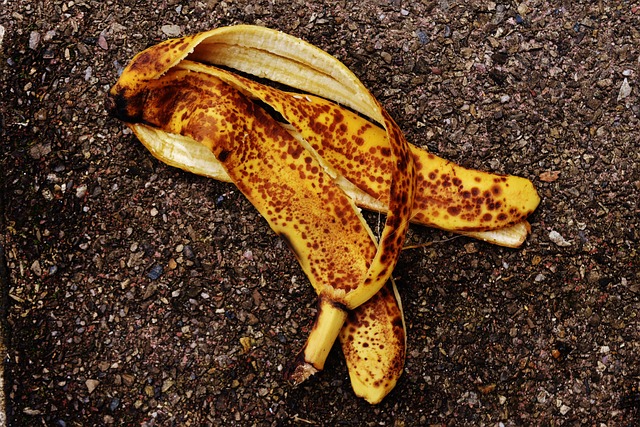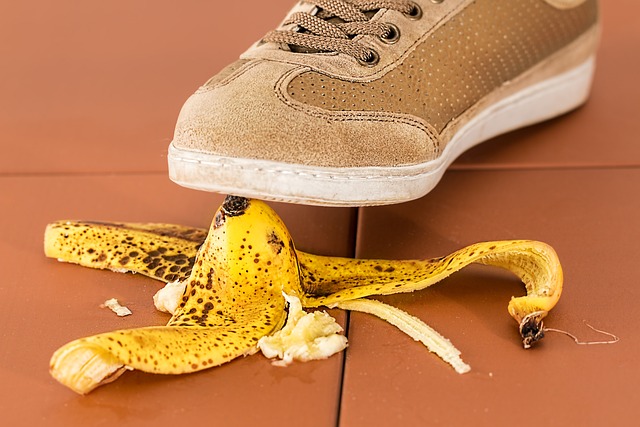Bananas, one of the world’s most beloved and widely consumed fruits, often raise the curiosity of why they split during ripening.
The phenomenon of banana skins splitting open from the centre can be attributed to a couple of common reasons.
Firstly, as the bananas ripen, they release gases, particularly ethylene, causing the skin to expand and ultimately develop cracks. This occurrence is more pronounced in bananas exposed to higher temperatures or direct sunlight, which accelerates the ripening process.
Secondly, bananas originate from clusters of flowers that fuse together during development. As the fruit grows, the skin stretches to accommodate its increasing size, resulting in splits at the centre of the peel.
These factors contribute to the distinctive tendency of banana skins to split open as they mature, adding to the wonder of this delicious fruit’s natural process.
Why Bananas Split- An In-Depth Details
Bananas split and develop what is commonly referred to as “splits” or “cracks” as they ripen due to a natural process called “stress cracking.” Stress cracking occurs in the banana peel when the fruit undergoes changes in its internal structure and composition during the ripening process.
Here’s a more detailed explanation of why bananas split:
Ripening process: As bananas ripen, they produce a hormone called ethylene. Ethylene is a gaseous plant hormone that triggers and accelerates the ripening process in fruits. It stimulates the production of enzymes that break down starches into sugars, making the fruit sweeter and softer.
Gas buildup: As the banana ripens, ethylene gas accumulates within the fruit, causing pressure to build up inside the peel.
Weakened peel: The peel of an unripe banana is relatively thick and sturdy. However, as the fruit ripens, the peel becomes thinner and more delicate. The breakdown of starches into sugars and the softening of the fruit’s flesh cause the peel to weaken.
Stress points: The banana peel has natural stress points or weak spots, often located along the ridges of the fruit.
Splitting: The combination of gas buildup, weakened peel, and stress points eventually leads to the formation of splits or cracks on the banana’s surface. The pressure from the ethylene gas inside the fruit causes the peel to separate along these stress points.

Common Misconceptions about Banana Splitting
Banana splitting, the natural process of ripening and softening, has led to several misconceptions over the years. Many of these myths have influenced how we store, handle, and enjoy bananas.
Bananas with Brown Spots are Overripe
One prevalent misconception is that bananas with brown spots are overripe and should be discarded. In reality, these brown spots indicate that the fruit is at its peak ripeness. It offers a softer texture and sweeter flavour. These bananas are perfect for snacking, baking, or making smoothies.
Green Bananas are Not Ripe
Contrary to popular belief, green bananas are indeed ripe but at an earlier stage of ripening. They have a firmer texture and a milder taste compared to their yellow counterparts. Green bananas are a popular ingredient in savory dishes and can be used as a healthier alternative to starchy vegetables.
F
Anatomy of a Banana: Understanding the Structure of Nature’s Perfect Snack
Bananas, the iconic and nutritious fruit loved by people worldwide, have a fascinating anatomy that contributes to their unique taste and versatility.
External Structure of a Banana:
The external appearance of a banana is instantly recognizable – a long, curved fruit with a vibrant yellow peel. However, this simple appearance holds more complexity than meets the eye.
Peel:
The peel of a banana acts as a natural protective layer, safeguarding the delicate fruit flesh within. The peel is initially green and gradually turns yellow as the banana ripens.
Its thickness and resilience ensure that the fruit remains intact during transportation and handling.
Stem:
At the top of the banana, you’ll find the stem, commonly known as the crown. This is where the banana is connected to the rest of the bunch during growth. The stem is non-edible and serves as a convenient handle when peeling the fruit.
Internal Structure of a Banana
Underneath the peel lies the inner structure of a banana, comprising a rich, creamy fruit flesh containing essential nutrients and seeds.
Fruit Flesh:
The fruit flesh, also called the pulp or banana meat, is what makes this fruit so delicious and nutritious. It has a smooth, buttery texture and a naturally sweet flavour. It makes it a popular choice for snacking, smoothies, and desserts.
Nutritional Content:
Bananas are rich in carbohydrates, particularly natural sugars like glucose, fructose, and sucrose.It provides a quick and healthy energy boost. They are also a good source of dietary fibre, aiding digestion, and essential vitamins and minerals, including vitamin C, vitamin B6, potassium, and manganese.
Ripening Process:
The fruit flesh undergoes significant changes during the ripening process, transitioning from green and starchy to soft and sweet. This transformation is driven by enzymatic activities, as discussed in the previous section.
Seeds:
Contrary to common belief, bananas do contain seeds, albeit small and barely noticeable. However, these seeds are generally not fully developed and are almost always sterile, making them non-functional for reproduction.
Seedlessness:
The lack of developed seeds is why bananas are classified as parthenocarpic fruits, meaning they can develop without fertilisation. This characteristic contributes to the seedless nature of the common edible banana varieties. It makes them convenient and easy to enjoy.
The next time you peel open a banana, take a moment to admire its anatomy – the result of millions of years of evolution and adaptation.
Unveiling the Nutritional Powerhouse: The Chemical Composition of Bananas
Bananas, the delightful and versatile fruit, not only satisfy our taste buds but also offer a wealth of essential nutrients. We are going to explore the chemical composition of bananas, highlighting their unique blend of carbohydrates, proteins, fats, vitamins, and minerals that make them a nutritional powerhouse and a popular choice for health-conscious individuals.
- Water Content:
One of the reasons bananas are so refreshing is their high water content. Comprising approximately 74% water, bananas are hydrating. It makes them an excellent choice to quench thirst and maintain proper bodily functions.
- Carbohydrates:
Bananas are abundant in carbohydrates, It makes them a quick and efficient source of energy. The primary carbohydrates present in bananas are natural sugars, including glucose, fructose, and sucrose. These sugars provide an instant energy boost. It makes bananas an ideal snack for active individuals or those needing a midday pick-me-up.
- Proteins:
Though not as prominent as carbohydrates, bananas do contain proteins.It essential for building and repairing tissues within the body. While they are not a significant source of protein compared to other foods like meat or legumes, the protein content in bananas contributes to their overall nutritional profile.
- Fats:
Bananas have an extremely low fat content. It makes them a heart-healthy choice. They contain minimal amounts of both saturated and unsaturated fats.It makes them a suitable option for those looking to reduce their fat intake.
- Vitamins and Minerals:
Bananas boast an impressive array of vitamins and minerals that contribute to overall health and wellbeing.
- Vitamin C:
Bananas are a notable source of vitamin C, a powerful antioxidant that supports the immune system and aids in collagen production, promoting healthy skin and wound healing.
- Vitamin B6:
Vitamin B6, also known as pyridoxine. It is crucial for metabolising proteins and carbohydrates. It helps regulate mood, sleep patterns, and brain function, making bananas an excellent choice for supporting mental health.
- Potassium:
Perhaps one of the most well-known minerals in bananas is potassium. This essential electrolyte plays a vital role in maintaining proper nerve function, muscle contractions, and heart health. Adequate potassium intake can also help regulate blood pressure.
- Manganese:
Bananas contain manganese, a trace mineral that supports bone health and helps the body’s antioxidant defence system.
So, the next time you reach for a banana you must remember that you are not only enjoying a delicious and satisfying treat, but you are also nourishing your body with a wealth of nutrients.
Environmental Factors Affecting Banana Splitting
Bananas are a widely cherished fruit for their sweetness, convenience, and nutritional value. However, the ripening process. It is often accompanied by banana splitting, and is influenced by various environmental factors.
- Temperature:
Temperature is a critical environmental factor that greatly affects the rate of banana ripening and splitting. Warmer temperatures accelerate the enzymatic processes responsible for softening the fruit. It converts starches into sugars.
- Humidity:
Humidity levels also play a crucial role in the ripening of bananas. High-humidity environments create a more favourable setting for ethylene gas to circulate and act upon the fruit. It promotes rapid ripening and splitting.
In such conditions, it is essential to closely monitor banana storage to prevent overripening.
- Light Exposure:
Light exposure can significantly impact the ripening of bananas. While bananas require sunlight to grow and develop on the plant.
Its excessive exposure to light after harvesting can accelerate the ripening process. It is essential to store bananas in a dark or shaded area to prevent premature ripening and splitting.
- Air Circulation:
Adequate air circulation is crucial to ensure even ripening. It prevents the buildup of ethylene gas around the fruit. Proper ventilation allows for the dispersal of ethylene and ensures a more controlled ripening process.
Additionally, excessive air circulation in the storage area may lead to dehydration of the fruit, affecting its texture and taste.

Keeping Bananas Whole: Effective Strategies to Prevent Banana Splitting
Bananas are a beloved and versatile fruit that offers a host of health benefits. Their tendency to split as they ripen can lead to food waste and disappointment for consumers.
- Proper Storage Tips:
Separate from Ethylene Producers:
To slow down the ripening process, store bananas away from ethylene-producing fruits like apples, avocados, and tomatoes. Ethylene gas speeds up the fruit’s ripening, increasing the chances of premature splitting.
Utilise Banana Hangers:
Banana hangers are designed to support bananas from their stems. It prevents them from touching any surfaces. This helps reduce pressure points on the fruit and minimises bruising, which can lead to premature splitting.
Place in a Ventilated Fruit Bowl:
Use a fruit bowl with adequate ventilation to allow for proper air circulation. This helps prevent ethylene gas buildup around the bananas and maintains a more controlled ripening environment.
- Managing Ethylene Exposure:
Ethylene Absorbent Packs:
Place ethylene absorbent packs in the storage area to help remove excess ethylene gas. These packs are readily available and can be used effectively. It reduces ethylene buildup, extending the shelf life of bananas.
Keep Bananas in Individual Wraps:
Wrapping each banana individually in plastic wrap or aluminum foil can minimize ethylene exposure. This technique creates a barrier between bananas, reducing their exposure to ethylene-producing fruits or other ethylene sources.
- Commercial Techniques and Practices:
Ethylene Scrubbers:
Some commercial storage facilities use ethylene scrubbers, which actively remove ethylene gas from the environment. This technique helps control ripening and prevents premature splitting during transportation and storage.
Controlled Atmosphere Storage:
Large-scale banana producers and distributors may employ controlled atmosphere storage facilities. By regulating temperature, humidity, and gas composition, these facilities can slow down the ripening process and extend the shelf life of bananas.
- Preserving Bananas with Other Fruits:
Storing Bananas with Apples Ripen them Faster:
Some believe that storing bananas with apples can speed up their ripening process. While apples do produce ethylene gas. It influences ripening, bananas are highly sensitive to ethylene exposure.
It keeps bananas away from ethylene-emitting fruits is essential to prevent premature splitting and maintain their freshness.
Wrapping the Banana Bunch Extends Shelf Life:
Wrapping a banana bunch with plastic wrap or aluminium foil is thought to slow down the ripening process. This practice can lead to increased moisture retention, promoting mould growth and hastening the ripening process instead.
From Ripe to Rich: Exploring Culinary Applications of Overripe Bananas
As bananas ripen, they transform into a sweet and delicious treat that is enjoyed by many. They become overripe and develop brown spots.Some may see them as past their prime. In reality, overripe bananas are a culinary treasure, offering a range of creative and mouth watering possibilities.
- Banana Bread and Other Baked Goods:
Classic Banana Bread:
Overripe bananas are a baker’s dream when it comes to making banana bread. Their natural sweetness and soft texture infuse the bread with rich flavour and moisture. Add some nuts or chocolate chips for extra indulgence, and you’ll have a delightful treat for breakfast or dessert.
Muffins and Cupcakes:
Overripe bananas can be used to make scrumptious muffins and cupcakes. Their natural sweetness means you can reduce the amount of added sugar in your recipes, making these baked goods a healthier option.
- Smoothies and Shakes:
Creamy Banana Smoothies:
Overripe bananas add a creamy and velvety texture to smoothies. It makes them a perfect base for any combination of fruits, vegetables, and yoghurt. Blend in some spinach or kale for added nutrients, or add a dash of cinnamon for extra warmth.
- Banana Protein Shakes:
If you’re looking for a protein-packed post-workout drink, overripe bananas are the answer. Combine them with your favourite protein powder, milk, or plant-based alternatives, and some nut butter for a satisfying and nutritious shake.\
FAQ’s
Is it safe to eat bananas that have split open?
Yes, it is generally safe to eat bananas that have split open. When a banana splits open, it usually indicates that the fruit is ripe or overripe. While the appearance may not be as visually appealing, the fruit inside is usually perfectly fine to eat.
What does it mean when a banana splits?
When a banana splits, it refers to the natural process of the fruit’s skin opening up or cracking as it ripens. This typically occurs when the fruit becomes fully ripe or overripe, and the skin cannot contain the expanding pulp inside. The splitting of a banana is a normal occurrence and does not indicate spoilage, but rather signals that the fruit is ready to be eaten or used in recipes.
Why do bananas split into 3 pieces?
Bananas split into three pieces as a result of the growth pattern of the fruit. The banana peel is composed of three layers, and as the fruit ripens, the middle layer (the gelatinous layer) softens and weakens.
The stress from the expanding pulp inside the fruit causes the weakened middle layer to break, leading to the banana splitting into three distinct sections. This splitting is a natural process and is a sign that the banana is fully ripe or overripe and ready to be consumed.
Why is banana split good?
A banana split is considered good because it is a delicious and indulgent dessert that combines various flavours and textures. It typically consists of a ripe banana sliced in half lengthwise and topped with scoops of different ice cream flavours, along with various toppings such as chocolate syrup, whipped cream, chopped nuts, and maraschino cherries.
Who invented banana splits?
The invention of the banana split is credited to David Evans Strickler, a 23-year-old pharmacist apprentice. Strickler created the banana split in 1904 at the Tassel Pharmacy in Latrobe, Pennsylvania, USA.
Final Words
Throughout this article, we have explored the intriguing journey of bananas from green to golden ripeness. Delving into their anatomy, chemical composition, enzymatic processes, and the impact of environmental factors on banana splitting.
We have also debunked common misconceptions and discussed how to prevent splitting, and discovered the delightful culinary applications of overripe bananas.
Banana splitting is not just a random occurrence but a natural and regulated process orchestrated by enzymes and ethylene gas. As bananas ripen, cellulase and amylase enzymes break down the cell walls and convert starches into sugars.It leads to the softening and sweetening of the fruit. Ethylene gas acts as the ripening hormone, initiating the process and signalling nearby fruits to follow suit.

